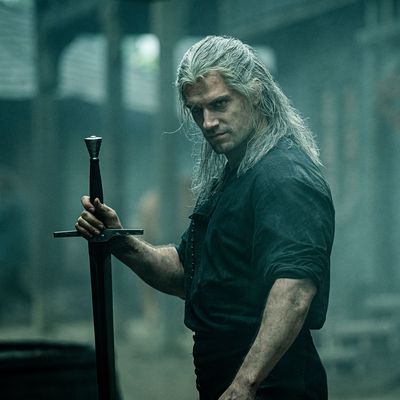
Sometimes, the most efficient way to review television is to describe what’s on the screen. That may seem like a cop-out, a way of dodging a critical assessment by just explaining what a show does rather than making any judgment. But description can be a useful critical tool: Describing something is also a process of sorting through what’s most worth describing and what’s unimportant.
This is a roundabout way of saying I would have very much liked to describe several scenes from Netflix’s new fantasy series The Witcher. It’s a show gasping to be described to death, to be sent out into the world with a crystalline image of what it looks and sounds and feels like.
Sadly, I can’t do that. In addition to sending out five episodes of The Witcher for review, Netflix sent out a long list of embargoed topics and scenes (essentially, a list of things critics are forbidden to describe in their reviews). It’s a thorough list, and it includes many of the things I’d most like to describe to any potential Witcher viewers.
So instead, I’m going to describe several elements, scenes, characters, and plot developments that are not in the first five episodes of The Witcher. Some of them are just plain descriptions of things that definitely do not happen in The Witcher. Some of them are descriptions of scenes that are sort of like things that happen in The Witcher but are very different in detail or character. Some of them contain true facts about The Witcher that are put into the context of untrue stories. There are no spoilers in this list because, again, none of this happens in The Witcher.
1. Geralt of Rivia, a.k.a. the Witcher (played by Cavill), is an extremely large and hairy man who speaks in clearly enunciated sentences. He never grunts, he exhibits good manners, and he has a logical and well-articulated backstory that points directly to his current motivations as they feature in the show.
2. Because The Witcher is based on both a video-game series and a series of novels, it has had ample opportunity to clarify exactly what’s happening within the complex mythology of its vast fantasy world. For instance, when characters have lengthy exchanges of dialogue about the terrifying threat from the west, The Witcher makes sure to situate everyone on a map so no one loses track of where all the action takes place.
3. Geralt never sleeps with the comely lasses he meets on his adventures.
4. An instructor at a witch school asks several young students to turn themselves into Cyclopes, poke one another’s eyes out, then strip naked and leap into a bottomless cavern. Everyone does it, and the lesson is deemed both useful and successful.
5. A character named Nephanie cuts off her own foot and then eats it, screaming ceaselessly as she struggles to chew her tendons. When she wakes up the next morning, she has seven new feet.
6. There’s an orgy that is essential to the narrative.
7. The Witcher is told in a postmodernist bricolage fashion, thoughtfully interweaving bits of found art, frame stories, paratexts, and commentary into a pattern that, when revealed as separate parts of one whole, makes absolute sense.
8. Many horrible monsters appear, including but not limited to: Sponforia (who lives inside children’s eyeballs), Garbodor (a sentient heap of trash), Heart (a lovable puppet from the Apple TV+ show Helpsters), and the Striga (a woman who was turned into a monster via a curse).
9. No one dies.
10. At the end of each episode, I absolutely did not stand up; scream, “What the hell was that?!”; and then tell everyone within earshot what I’d just seen.


